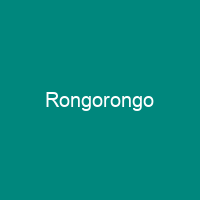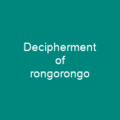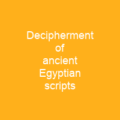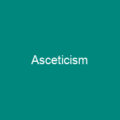Rongorongo: The Mysterious Script of Easter Island
Imagine stepping into an ancient world where every wooden tablet tells a story, yet no one can read it. That’s what Rongorongo is—a system of glyphs discovered on Easter Island that looks like writing but remains undeciphered. Could this be the key to unlocking a lost civilization’s secrets?
Discovering the Mystery
The 19th century saw the discovery of these intriguing tablets, found on wooden objects such as staffs and tablets. Some were weathered or burned, adding an air of mystery to their origins. The inscriptions are written in alternating directions, featuring outlines of human, animal, plant, artifact, and geometric forms. These symbols seem to tell a story, but what is it?
Materials and Methods
Oral tradition states that expert scribes used toromiro wood to write the script, while pupils wrote on banana leaves. But microscopes revealed that Pacific rosewood (Thespesia populnea) was actually used for some tablets, suggesting Western contact. German ethnologist Thomas Barthel believed that carving on wood was a secondary development based on earlier stages of incising banana leaves or sheaths with a bone stylus.
Writing and Reading
The writing instruments used included obsidian flakes or small shark teeth, which were likely hafted tools still used in Polynesia. The remaining hair-line cuts on rongorongo tablets were either errors, design conventions, or decorative embellishments. Vertical strings of chevrons or lozenges were connected with these cuts. Rongorongo glyphs were written in reverse boustrophedon, with readers beginning at the bottom left-hand corner and rotating the tablet 180 degrees to continue reading.
Origins and History
The start of forest-clearing for agriculture on Easter Island has been dated to circa 1200, implying a date for the invention of rongorongo no earlier than the 13th century. Glyph 67 represents an extinct palm tree and is thought to be at least that old. The last literate Rapanui king, Ngaꞌara, sketched out the glyphs in soot and then engraved them with a shark tooth.
Decipherment Challenges
Few texts remain, making decipherment difficult. Oral tradition holds that Hotu Matuꞌa or Tuꞌu ko Iho brought 67 tablets from their homeland, but no homeland is likely to have had a tradition of writing in Polynesia or South America. It is likely that only a small minority of the Rapanui people were literate.
Modern Efforts
In the 1950s, archaeologist Barthel found decayed remains of tablets in caves but no glyphs could be salvaged. Today, only half of the 26 commonly accepted texts are in good condition and authentic beyond doubt. Katherine Routledge conducted a scientific expedition to Rapa Nui in 1914-1915, interviewing two elderly informants who allegedly had some knowledge of rongorongo.
Barthel’s System
Barthel assigned a three-digit numeric code to each glyph or group of similar-looking glyphs, categorizing them by form and shape. The system has inconsistencies and arbitrariness, making it complex. However, despite its shortcomings, Barthel’s system is the only effective proposal for categorizing Rongorongo glyphs.
Published Corpus
Only a few texts were published until Thomas Barthel (1958) published line drawings of almost all the known corpus, transcribing texts A through X over 99% accurately. Fischer (1997) published new line drawings with corrections to omissions and discrepancies.
Decipherment
Fanciful interpretations and claimed translations exist but none have been shown to be accurate. Three serious obstacles hinder decipherment: the limited number of remaining texts, lack of context, and poor attestation of the Old Rapa Nui language. The prevailing opinion suggests rongorongo is not true writing, but a proto-writing or mnemonic device for specific purposes.
Computer Encoding
The Unicode Consortium has tentatively allocated range 1CA80–1CDBF of the Supplementary Multilingual Plane for encoding the Rongorongo script. An encoding proposal has been written by Michael Everson.

Despite the challenges, the mystery of rongorongo continues to captivate scholars and enthusiasts. Could it be that one day, we will finally unlock its secrets? The answer lies in the depths of Easter Island’s history, waiting for someone brave enough to decipher this ancient script.
You want to know more about Rongorongo?
This page is based on the article Rongorongo published in Wikipedia (retrieved on November 29, 2024) and was automatically summarized using artificial intelligence.







